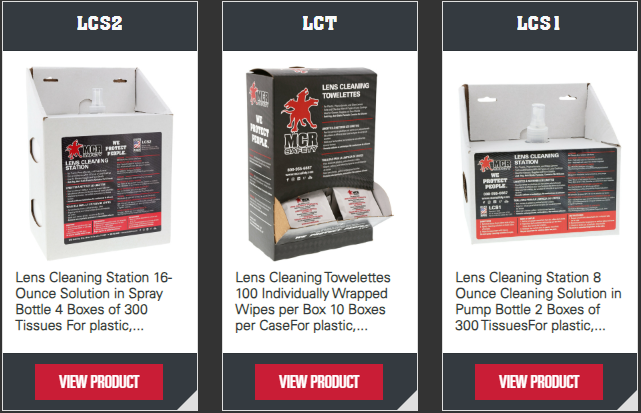Washing Gloves, FR Clothing and PPE: Your Laundering Guide
Posted by Anthony Webb on Dec 4th 2024
Wearing PPE on the job is essential. It keeps you safe from potential hazards and the elements while you work. It allows you to do your job effectively--everyone knows that a great glove protects your hands and allows you to get a strong grip on even the most slippery equipment!
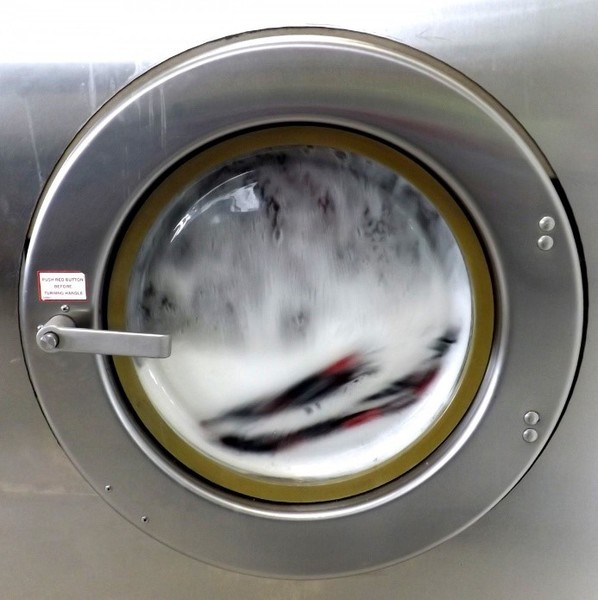
Washing PPE
It goes without saying that your PPE is going to get dirty. Whether it’s covered by a little (or a lot) of oil, dirt, chemicals, or other contaminants, your PPE is not going to remain as clean as it was the first time that you put it on. It is just as essential to properly launder your PPE at regular intervals as it is to wear it on the job. Why? Washing gloves provides several common-sense benefits:
- It extends the life of your PPE by getting rid of contaminants, which, if left on gloves, could eventually cause damage--holes, pulls, etc.--to fabrics.
- It allows you to maintain proper hygiene by removing odor-causing bacteria.
- It mitigates the risk of infection or injury by contaminants left on PPE after a job.
- It maintains your PPE’s professional appearance, which may be necessary if you need to interact with members of the public, company stakeholders, or other individuals as part of your job.
- It saves you money, as laundering is less expensive than repeatedly investing in new PPE.
All of the above points are excellent news for companies or workers looking to cut costs! Just keep in mind that laundering a glove can impact its performance over time, especially the coatings. Grip and abrasion scores may be impacted if the dip is removed or altered during laundering.

ANSI/ISEA scores are critical for determining PPE performance.
Never forget why you’re wearing the glove in the first place; your gloves are worn to protect your hands, not save on your laundry bill. You also will need to dispose of any glove showing definite signs of deterioration or gloves that have been soiled with skin irritants.
In this blog article, we are going to arm you with everything you need to know to safely launder your gloves. Plus, we’ve got a couple of extra bonus sections on cleaning safety glasses and laundering safety vests.
MCR Safety’s Laundering Commitment

Before we tackle washing instructions for different fibers and polymers, we want to highlight a couple of important points. First, we test all of our products in our ITC Lab, which is one of the first North American testing labs to receive the ISO/IEC 17025 accreditation under the ANSI/ISEA 105 scope. Part of the test includes laundering assessments. Running our products through numerous wash cycles ensures they meet the quality level we expect.
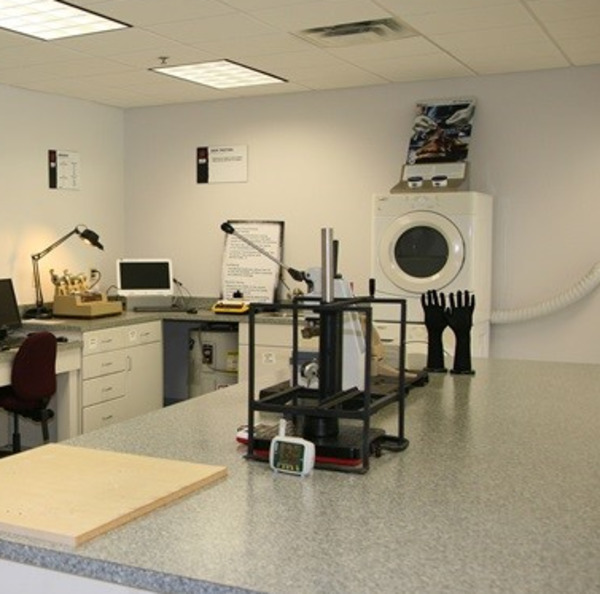
ITC Lab’s Washing Area
Second, our new NXG branded gloves are manufactured in MCR Safety’s brand-new manufacturing facility. We wash our gloves seven times before they are shipped out! This ensures all strong odors from the manufacturing process are removed.
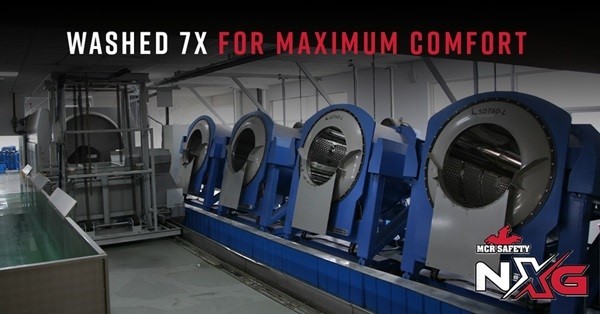
We are committed to supplying users with only the best PPE!
Fibers Commonly Needing to Be Laundered
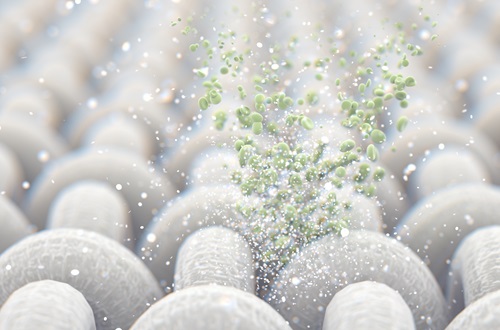
MCR Safety is proud to offer a variety of gloves, allowing our customers to find the perfect pair no matter what job they are doing. We utilize many different fibers in the construction of our gloves so customers have a wide variety from which to choose.
You have probably guessed where we’re going with this. Because we offer so many different glove options made with such a variety of materials, it’s important to know how to wash the kind of glove you have. Each fiber may be impacted differently during laundering by cleaning agents, temperature, etc. We’d like to review with you the recommended laundering procedures for the most common glove materials.
General Purpose: Cotton and String Knit Gloves
(Nylon and Polyester)
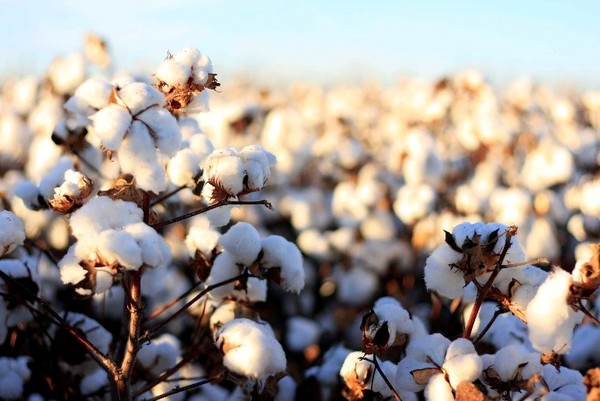
Both cotton and string knits protect workers’ hands in a variety of applications that expose them to a range of dirt, debris, and other contaminants. These materials can both be safely laundered, extending the gloves’ life and lowering your overall costs.
When you wash these gloves, make sure that you sort them by color (white-/dark-/light-colored gloves should be washed separately). When sorting, always wash nylon items separately from other fabric types. Next, it is important that when you prepare to wash your gloves, you inspect them for spots and stains so that you can pre-treat those areas.
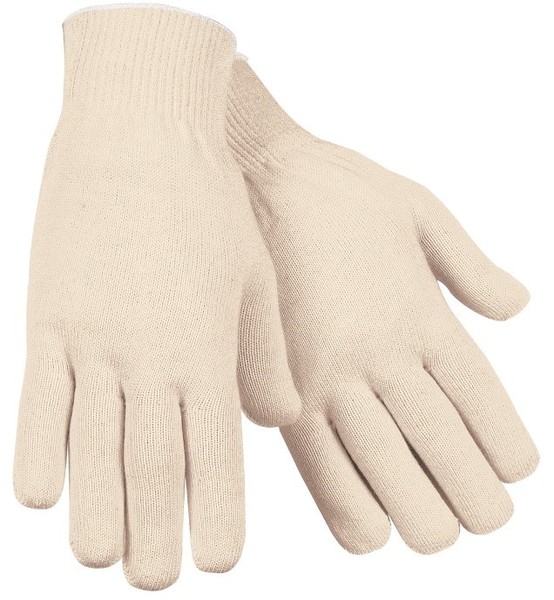
100% Cotton Glove
We recommend the following steps be taken when washing cotton gloves, to prevent them from shrinking and to help prolong their lifespan:
1. Use commercial laundry soap or detergent that does NOT contain chlorine-based chemicals, bleach, or dry cleaning solutions. OxiClean™ or equivalent is the preferred detergent to avoid shrinkage of cotton, string knit, and terry cloth gloves.
2. Machine wash the gloves in warm water, up to 400°F. It is recommended that you wash gloves at 170°F for 15 minutes for optimal results.
3. We recommend that you air-dry gloves for optimal results. Tumble-drying cotton gloves in a machine is NOT recommended.
4. Repeat wash and rinse if gloves contain heavy dirt or grease. You may use several pieces of heavy canvas/cotton in the second wash to help remove deep grime from the gloves.
For string knit gloves, follow the exact same instructions as above.
Dyneema® Diamond Technology

MCR Safety is proud to offer a collection of gloves made with Dyneema® Diamond Technology. One key benefit to this material is that no glass is used in the fiber to strengthen its cut-resistance properties. A common practice in the past decade has been to add high levels of glass to the fibers to strengthen cut-resistance levels.
Unfortunately, glass fibers wash out over time, meaning your glove’s performance will begin to decline with each wash. Not with Diamond Technology fibers! When wearing gloves using Diamond Technology, there are fewer concerns over the product’s integrity and quality, even after laundering, because its cut-resistant properties aren’t washing out. Workers have to be sure that their gloves keep excellent performance levels, even after laundering.

Dyneema® fibers are constructed on ultra-high-molecular-weight polyethylene (UHMWPE). Therefore, the main properties are not affected by water or moisture. Dyneema® fibers are inert to most types of aggressive agents and environmental influences.
Two key points from Dyneema:
• Standard chemicals typically used in industrial laundering such as detergents, ammonium/sodium hydroxides, and hydrochloric acid are not known to affect the performance of the Dyneema® fiber.

- The melting point of Dyneema® is between 144-152°C / 290-306°F. Standard laundering procedures and water temperatures between 160-170°F should therefore not damage Dyneema® gloves, but be careful if your water reaches higher temperatures.

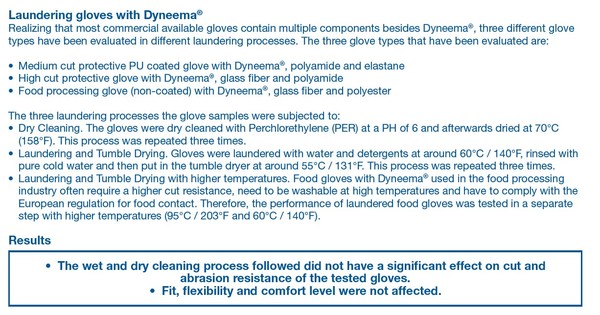
Dyneema® test results
Hypermax™ Technology
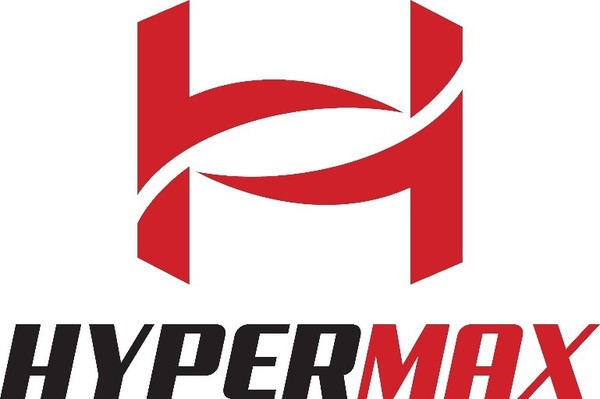
MCR Safety offers our customers a number of gloves containing Hypermax™ cut-resistant fibers. We’ve prepared information describing the appropriate laundering procedures to prevent shrinkage and to ensure that our gloves featuring Hypermax™ technology keep protecting workers’ hands through multiple washes.
1. Use commercial laundry soap or detergent that does NOT contain chlorine-based chemicals, bleach, or dry cleaning solutions. OxiClean™ or equivalent is the preferred detergent to avoid shrinkage of HYPERMAX gloves.
2. Machine wash in warm water, up to 194°F. We recommend that you wash gloves at 140°F for 15 minutes for optimal results.
3. Tumble dry gloves at 131°F for 15 minutes for optimal results.
4. Repeat wash and rinse if gloves contain heavy dirt or grease. You may use several pieces of heavy canvas/cotton in the second wash to help remove deep grime from the gloves.
NOTES:
1. Hypermax™ gloves have a melting point of 290-306°F. Conventional laundering is recommended up to 194°F to maximize the lifespan of Hypermax™ gloves.
DuPont™ Kevlar® Technology
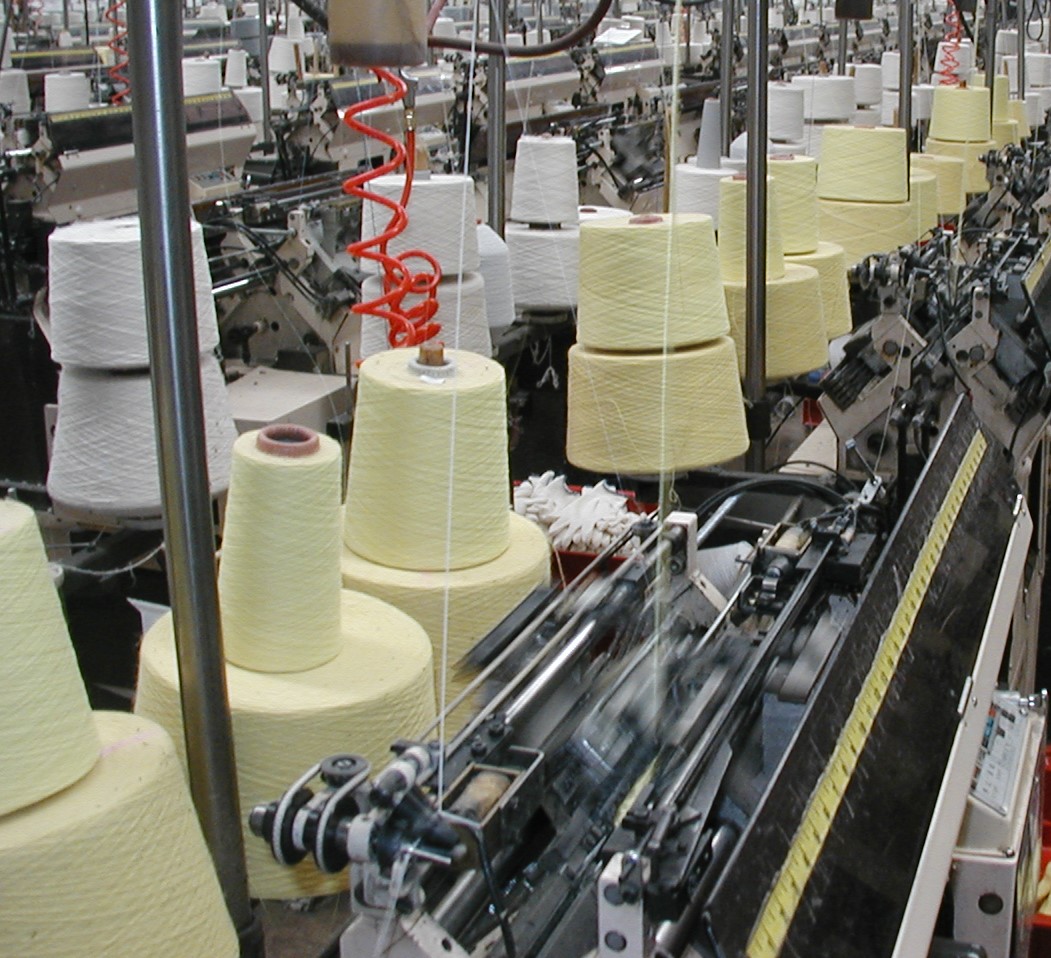
Invented by DuPont™ chemist Stephanie L. Kwolek in 1965, Kevlar® has been providing an unprecedented level of protection to workers across all industries for over half a century.
DuPont™ explains in their laundering guide that most gloves are expected to undergo less than 10 cleaning cycles due to standard wear and tear. They also remind users that, “[a]lthough the strength of Kevlar® yarns used in protective apparel, e.g. gloves, gradually decreases with successive cleaning cycles, the cut resistance is not impacted.”
The average service life of protective apparel made from Kevlar® is determined by several factors, including: fabric basis weight, article construction, nature of the hazard during use, the cleaning/repair program, and the standard for keeping gloves in service, which is established by the user.
Here are two important additional points mentioned in DuPont’s laundering guide:
1. Laundering and dry cleaning have no significant impact on the cut resistance of gloves made of 100% DuPont™ Kevlar® even after 10 consecutive cleaning cycles. Shrinkage, weight loss, changes in yarn tensile strength, and changes in color related to staining from soil or the cleaning method may be observed.
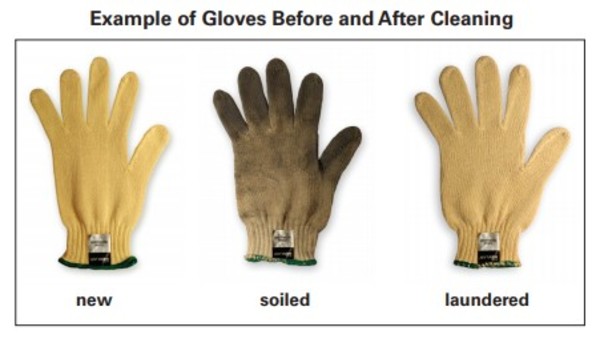
2. Cleaning Solutions Containing Bleach
Kevlar® brand fibers are resistant to many chemicals and solvents. However, strong acids, bases, and certain oxidizers like chlorine bleach (sodium hypochlorite), cause rapid degradation of the fiber. Chlorine bleach or chlorine generating chemicals should not be used with Kevlar®. Chlorine causes the fabric to lose its strength and it can be torn by hand. By contrast, when oxygen bleach is used, the yarn loses less than 10% of its original strength.
DuPont™ suggests that oxygen bleaches such as sodium perborate (for example, OxiClean®) are safe to use on Kevlar® products.
Leather Work Gloves

You may get nervous about cleaning your leather work gloves, but if you follow MCR Safety's guide to cleaning your leather gloves they will look great and, most importantly, will still protect your hands.
Leather work gloves, with fabric backs and cuffs, are suggested to be laundered as follows:
- Dry cleaning is to be done in front-loading, commercial washers/extractors.
- Different solvents and chemicals may be used (for example, mineral spirits, petroleum solvents, and dry cleaning detergents).
- The number of cleaning cycles necessary and their duration depends on how soiled the glove is:|
For lightly soiled gloves: Wash in petroleum solvents and detergents up to 10 minutes.
For heavy soiled gloves: Wash in two or three rinse cycles. The first cycle should run for 5 to 10 minutes; the second and third cycles should run 10 minutes each.
- Washing is done with chemicals at room temperature. No heat is needed. All chemicals are to be removed after each cycle. Chemicals can be filtered and re-used. All distilled chemicals are to be destroyed after use per E.P.A. regulations.
- To dry gloves: Extractors are to be set at 110°F to 140°F and should run for 4 to 6 minutes.
- To avoid stiffness in dried leather, gloves can be air-dried in a tumbler for up to 30 minutes at temperatures of 110°F to 120°F with 3/4" hard rubber balls to soften the leather.
- Do not use any chlorine or bleach cleaning compound.
People often ask how many times a glove can be cleaned. The number of cleaning cycles a glove can withstand depends on the grade and quality of leather and the quality of glove fabrics. Some elastic materials used in glove cuffs may harden and become brittle due to chemical effects and heat. Gloves with duck fabric/backs are most amenable to laundering.
The thickness and grade of leather determine the durability of a glove both in use and in laundering. You can read up more on this topic in our ABCs of leather work gloves blog.

Leather quality affects the number of times a leather glove can be washed.
One last note regarding dry-cleaning leather gloves: commercial dry cleaning is an acceptable, cost-effective method to re-using most all leather work gloves. Some differences in shrinkage, hardening, weight loss, and color retention may occur, however, due to the dry cleaning process or chemicals used.
Natural Rubber Latex, Nitrile, Neoprene, and PVC

Lined gloves made of rubber, nitrile, neoprene, and PVC (or combinations thereof) are among the easiest work gloves to clean. Plus, as long as not punctured, they will last a long time. Before reading any further, if you have handled chemicals while wearing these types of gloves, be careful when cleaning them. The substances you want to keep off you are still most likely all over the outside of the glove.
Here is what you need to consider:
1. Before you take off the gloves, wash them with soap and water, preferably at a utility sink or outdoors using a hose. You can also use mild liquid detergent in place of soap. Rinse the gloves thoroughly.
2. Turn the gloves inside out, and soak the gloves in soap and water. Be sure to wash your hands with soap and water after you have rinsed and removed the gloves.
3. Hang the gloves to dry thoroughly. Once dry, repeat the above steps for the inside liner.
4. Wipe the gloves off with a disinfectant cloth.
5. Store the gloves someplace dry to help prevent the growth of mildew.
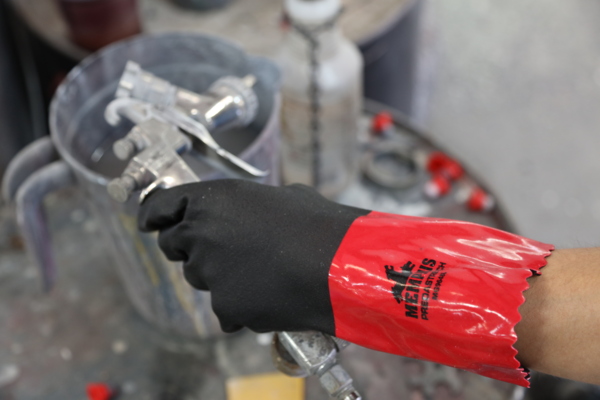
MG9648, one of our lightest weight waterproof / chemical resistant gloves.
Never reuse a glove that has come in contact with blood or bodily fluids. Also, any glove that is changing colors, cracked or ripped needs replaced.
Cleaning Safety Glasses

Everyone who wears glasses knows how important it is to keep them clean. Safety glasses allow us to see properly, so we must keep the lenses clear of contaminants that could lead to scratches. To clean safety glasses, first make sure that your hands are thoroughly clean (this includes no lotion). We have prepared a guide to help you care for all your MCR Safety glasses:
1. Rinse debris and dirt from lenses with warm water.
2. Wash both sides of the lenses and the entire frame using mild soap.
3. Rinse clean again with warm water. Ensure that all the soap is gone so that there will be no streaks.
4. Gently shake lenses to remove most of the water.
5. Remove excess water with a soft tissue or microfiber cloth.
Notes:
1. If mild soap and water are not present at the job site, we also recommend MCR Safety’s lens cleaning towelettes (LCT) or spray bottle cleaning solution (LCS1).
2. Do not use other competitors’ cleaning wipes if they contain more than 15% alcohol as they may damage polycarbonate frames and lenses.
3. Do not use autoclaves to clean your safety glasses as these will give the material a yellow tint and cause it to become brittle over time.
Washing Safety Vests
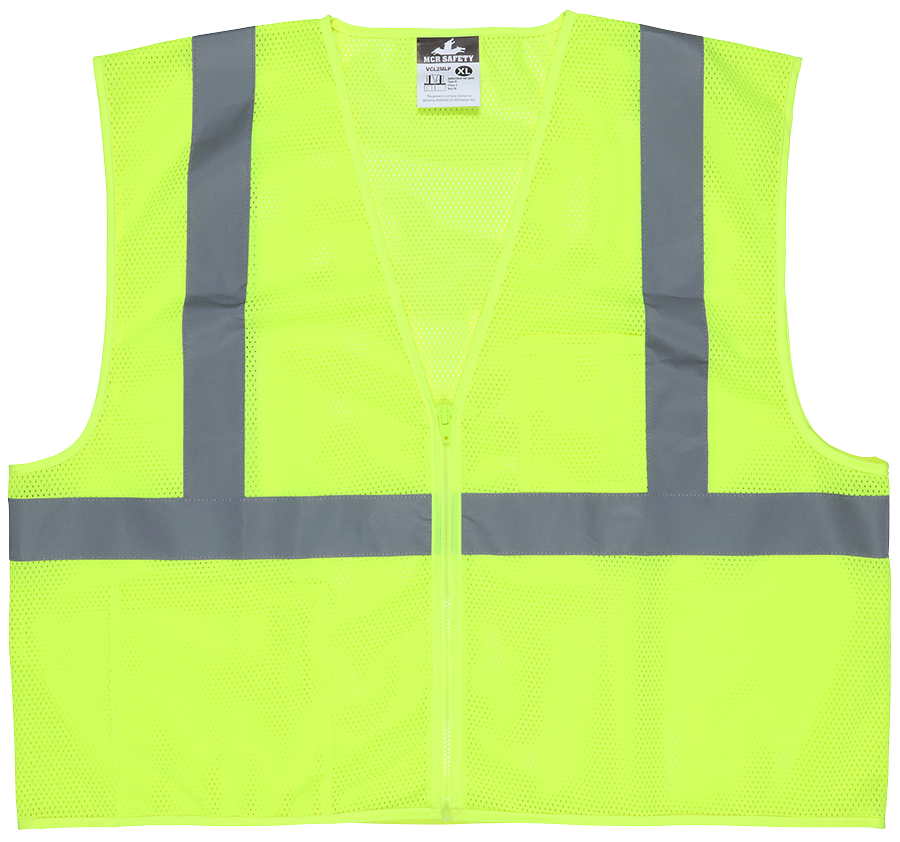
Industrial environments like mines, construction sites, and airports are environments where one’s work apparel gets dirty and grimy rather fast. And the last thing you want when wearing a hi-vis reflective safety vest is to have dirt covering up the reflectivity. The whole point of wearing the vest is to stay seen, which will become more challenging if the reflectivity is dirty.
Every safety vest has the following tag inside it:
![]()
Here are some additional tips:
1. Machine wash with like colors on a delicate cycle.
2. Use a mild detergent. Do NOT use bleach! We also do not recommend using fabric softeners.
3. Avoid washing reflective products with rough fabrics or garments with rough edges, like your work jeans. The microscopic glass beads found on the reflective tape can be worn off by garments with a rougher texture.
Laundering FR Clothing
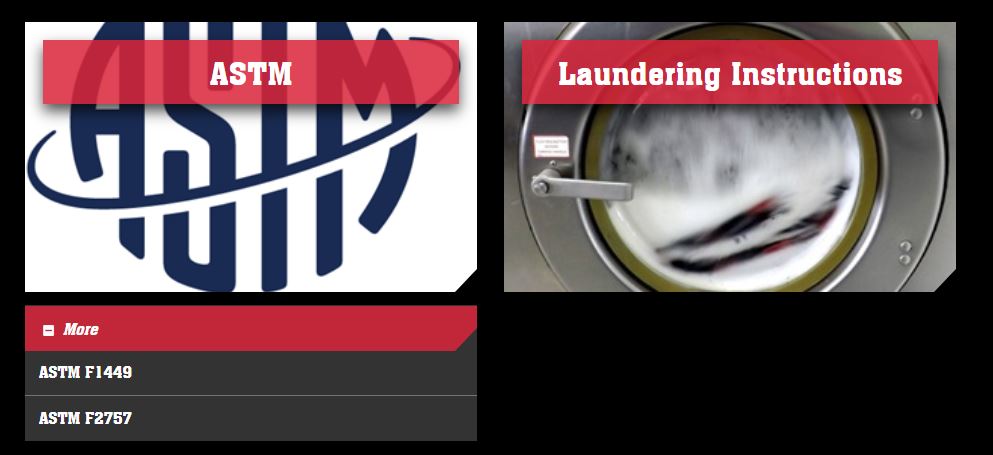
FR protection is engineered to withstand a lot of wear and tear, which means apparel can withstand several visits to the washer. MCR Safety doesn’t provide laundry service or administer uniform inspections. However, we do provide laundry instructions for the specific fibers utilized, as different fibers require specific laundering procedures to remain effective. This is excellent news for many, as FR garments can be washed at home using your standard washer and dryer.

MCR Safety Triple Vented FR clothing powered by Summit Breeze Technolgy®
We highlight everything you need to know about about FR laundering in our FR Knowledge Center.
We Protect People!

You use your hands constantly when you are at work: on an oil rig, under a car, in a cafeteria, on a farm, or on a construction site. Depending on the work that you are doing, you may also need to wear safety glasses.
MCR Safety wants you to be protected at all times. We also want to ensure that you know how to take care of your PPE, how to keep it clean, and how to keep it from degrading or shrinking. We want you to focus on your work, not on what you’re wearing. Properly following the laundering directions supplied above will ensure that your PPE keeps working for you for a long time.
We welcome any comments, feedback, or suggestions for how we can best protect people at work.
For over 45 years, MCR Safety has proven to be a world leader in gloves, glasses, and garments. Whether it's on the shop floor, an oil rig, a construction site, or shooting outdoors, we are there to provide solutions to workplace (and recreational) hazards. It's all part of our commitment to protect people.
No matter your industry, we have the personal protective equipment you need.
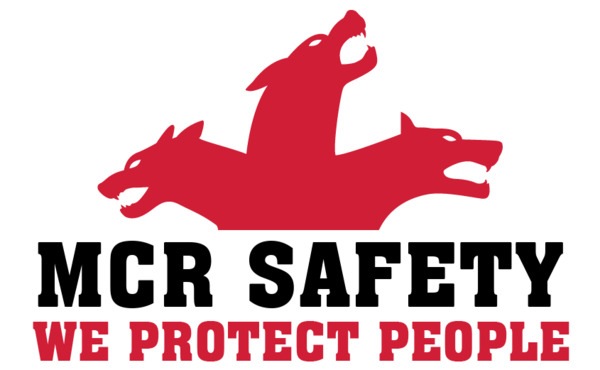
Learn more about MCR Safety by checking out our most recent video. For more information, browse our website, request a catalog, find a distributor, or give us a call at 800-955-6887.


